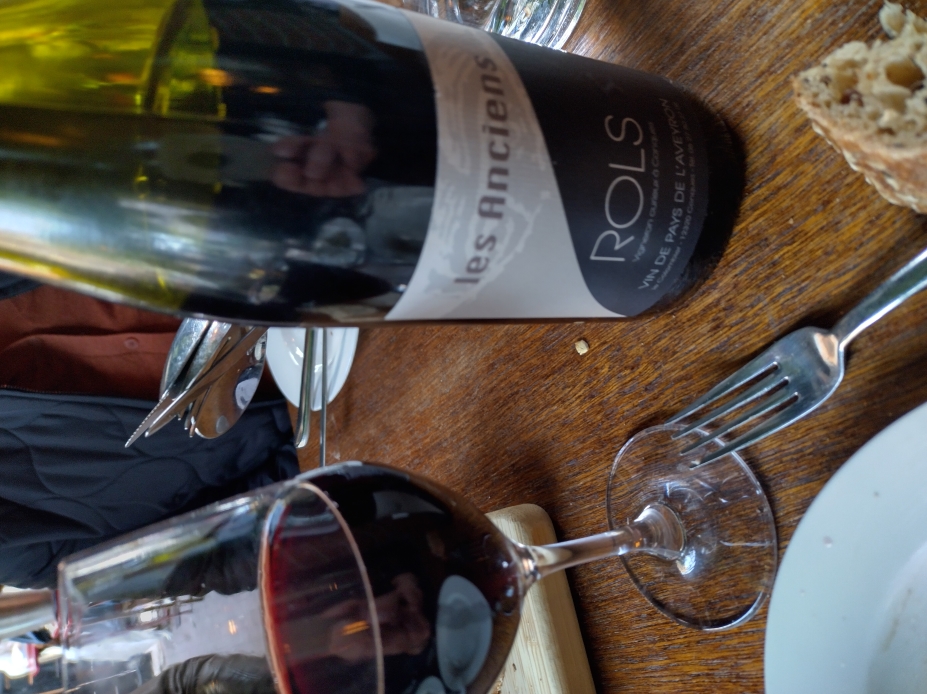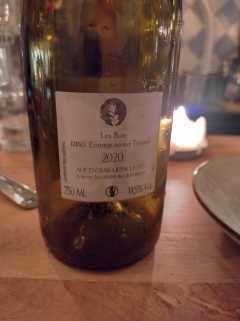Comté Tolosan, wine and terroirs of Sud ouest
When talking about the French vineyard, most people can talk about five to six wine regions: Bordeaux, Bourgogne, Loire, Alsace, and Rhône. Some may include other vineyards like Jura, Provence, or even Savoy. But rarely the Sud Ouest Region is mentioned, some may have heard about Cahors, Gaillac, or Monbazillac, but the region is mainly unknown. Here in Amsterdam, finding any bottle from there is difficult. But this area has a very rich historical wine tradition and a rich terroir.

Sud Ouest is a very rich wine region. It covers the actual part of the former Midi Pyrenée administrative region, with its capital Toulouse and includes vineyards of Gascony and Basque land on the South and part of the Auvergne with the Cantal on the North. All the vineyard is today part of a regional appellation, IGP Comté Tolosan from the name of the ancient county around the city of Toulouse.
Wine is present in the region since the Roman age. There are traces of winemaking around Gaillac documented during the first century AC.
But the position of the region gives the region a crucial role in conceiving the European wines we know today. Most of the roads for the Santiago de Compostela pilgrimage cross the region. Pilgrims tested wine on their way and often come back with some wine. It allowed a more global wine trade between regions. Pilgrim, also, sometimes brings back vine plants. For example, the case of Cabernet Franc, a native Spanish variety from the Pyrenees, begin to be used in the southwest, then Bordeaux, and in the Loire Valley.
In terms of vine variety, the region counts almost 300 different varieties, among them about 130 are indigenous. The Sud Ouest region grows all six vine families. Some of these varieties are only cultivated on a few hectares across the region, mostly on family size exploitation, that grow them for generations. It gives these terroirs a sense of place or a taste of the terroir. The taste comes not only from the soil and the climate but also from the agricultural and winemaking practices.
The Sud Ouest region has 16 AOC and 13 IGP (including the regional IGP Comté Tolosan) appellations. Let’s look at some of these appellations to discover the diversity of wines from Sud Ouest.
AOP Irouléguy The Irouléguy terroir is in the Pays Basque region. The vines are cultivated in terraces on steep hillsides with Triassic red sandstones, calcareous soils, and clays.
The appellation produces Red, Rosé, and white wines with a real identity with a strong expression. The main grapes for red wines are Cabernet Franc and Tannat and optionally Cabernet Sauvignon. The wine is powerful, wine nice tannins and flavors around spices, red and black fruits, and forest.
Rosé wines are produced with the same varieties as the red but with the possibility to add Courbu, gros, and Petit Manseng. The wine is fresh with red fruits and spices aroma.
White wines are made using Courbu (called locally Xuri Cerratia), Gros Manseng, Petit Manseng, and Petit Courbu. The wine is very expressive with firm aromas.
AOP Saint-Sardos On the left bank of the Garonne in the Lot et Garonne department, this terroir produce wine since the middle age. The terroir climate is unique with the influence of Mediterranean winds during the spring and the summer and the influence of the Atlantic Ocean that give mild winter.
Saint Sardos produce mainly red wine, made with Syrah (at least 40%) and Tannat (at least 20%). Cabernet Franc and Merlot can also be used.
The wine is complex with licorice, flower, and dark fruit aroma.
IGP Lavilledieu Located in the valleys of the Tarn and the Garone, near Fronton, with soil made of silts, more or less coarse sands, and clays.
This appellation produces Red and Rosé wine made from Cabernet Franc, Gamay, Negrette, Syrah, Tannat, Fer Servadou, and Milgranet.
The wine often has a deep garnet color, with floral and red fruit flavors and melted tannins.
AOP Estaing With only 18 hectares, the AOP Estaing is the smallest AOC appellation in France. Located in the northern part of the Aveyron department. The vineyard is exploited since the 10th century. Today only 14 winemakers work in this appellation. Red, white, and rosé are produced here.
Vines grow on schist soils and hillsides with steep slopes.
Gamay and Fer Servadou are the main red grape varieties, but Cabernet Franc, Cabernet Sauvignon, Abouriou, and Castet.
For white wine, Chenin Blanc is the main variety with Mauzac and Saint Côme.
Red wines are fresh, and fruity with a strawberry dominance. White wines are floral with a touch of honey.
AOP Entraygues-Le Fel

The Appellation Entraygues - Le Fel is located just next to the AOC Esteing. It is also a tiny vineyard, less than 20 hectares. It is present in two departments, Cantal and Aveyron.
Vines grow on the side of mountains in the Lot Valley. There are two types of soil, at Fel schist and sand and granite for Entraygues.
Red wines must contain at least 50% of Fer Servadou with optionally Cabernet Franc and Cabernet Sauvignon (also Mouyssagues). The aromas of red wines are marked by red fruits, blackcurrant, and black cherry with a rich minerality.
White wines are made, mainly with Chenin Blanc sometimes with Saint-Come and Mauzac. They are complex with rich floral notes.
AOP Tursan Tursan is an appellation found in the south of the Landes department, near the Pyrenees and the Adour Valley. The size of the vineyard is under 300 hectares. The appellation produces White, Rosé, and Red wines.
The main varieties of white wines are the Baroque and the Gros Manseng, but it can include Chenin Blanc, Claverie, and Petit Manseng.
Red and Rosé are made mainly with Cabernet Franc and Tannat, with optionally, Cabernet Sauvignon, Fer Servadou, and Merlot.
Red wines are robust with a rich fruit flavor along with leather and spice.
IGP Coteaux-de-Glanes This appellation is located in the northern-east part of the Lot department just next to the Massif Central volcano, locally known as “Le Segalla”. Vine grows on the top of hills, on clay-limestone soils. It is a small vineyard with less than 90 hectares.
Grape varieties used here are, Abouriou (a local and ancient variety, producing dark-colored wine), Cabernet France, Cabernet Sauvignon, Fer Servadou, Segalin, Valdiguié, Gamay for the red, Chardonnay, Chenin, colombard, mauzac, sémilion and viognier for the with.
IGP Côtes-du-Lot This appellation covers a large part of the Lot department. The soil is mainly composed of limestone, called locally the Quercy Blanc. the territory is crossed by two valleys, the Lot Valley and the Dordogne Valley. The appellation produces 46k hl of wine per year.
Flavor in red wine is dominated by fruit, rosé wines are powerful and white aromatic. The appellation allows a lot of grape varieties.
For the Red Malbec, Cabernet Franc, Cabernet Sauvignon, Cinsault, Merlot, Gamay, Syrah and Tannat. But also local grapes like Segalin, Abouriou, Alicante Henri Bouschet.
Red wines have a deep purple color, a strong fruity aroma, and smooth tannins. Primeur wine exist also (like for Beaujolais nouveau) but only use Malbec and Gamay.
White wines use mainly Vioignier, Chardonnay, Chenin Blanc, Mauzac, and Sémillon blanc. The aroma is on fruits like pear and quince with floral notes.
Some sparkling wines are produced but the production is confidential.
These few words are on some of the appellations present in the Sud Ouest region. They are small and mostly unknown but they have a rich history and they use very rare grape varieties and most vineyards are family-based exploitation. Sure, finding wines from Sud Ouest is not easy in the Netherlands, some are present (Cahors, Irouléguy, or even Entraygues-Le Fel) but not impossible.
In June, if you have the chance to be in the Region you can check this natural wine fair: